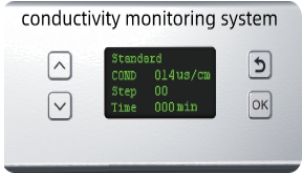With the development of the scientific research industry, more and more laboratories and instruments are used, and the problem of cleaning experimental equipment instruments is becoming more and more obvious. Manual cleaning may be OK for the ordinary laboratories, but for institutions and production enterprise laboratories, it is very time-consuming. At this time, the role of laboratory glassware washer can be well highlighted.
In the process of manual cleaning, it is easy to cause cleaning residue and uneven cleaning degree due to the influence of artificial environment, operation mode and other factors. The Lab Washing Machine adopts the double rotating spray technology. After repeated rinsing, the cleaning ability is strong and the cleaning degree is uniform, which reduces the influence of washing liquid residue on subsequent experiments.
Lab glassware washer adopts the full-automatic bottle washing technology to clean the laboratory utensils through the processes of pre-cleaning → main cleaning (spray cleaning) → neutralization cleaning → primary rinsing → secondary rinsing → drying. It is a convenient and economical cleaning equipment integrating cleaning and drying. Ordinary automatic glassware washer can clean 100 volumetric flasks or 172 pipettes and 460 injection vials at a single time. It can meet the needs of ordinary laboratories basically.
Glassware washer use multiple stages for cleaning generally, such as pre- cleaning, main cleaning, neutralization cleaning, etc. in order to achieve good cleaning effect, bottle washing will add some cleaning agents to these different cleaning processes for auxiliary cleaning, but in this way, cleaning agent residues may occur. Therefore, the last cleaning water should use pure water with cleaner water quality.
What are the specific requirements for the last cleaning water of the glassware washer?

Generally speaking, should be use RO pure water that conductivity is less than 30μS/cm to rinse for many times,that’s the tertiary water, to remove the residual detergent and pollutants in the previous cleaning stage. Usually in the laboratory, we can use pure water machine to prepare.
Post time: Jul-20-2022
